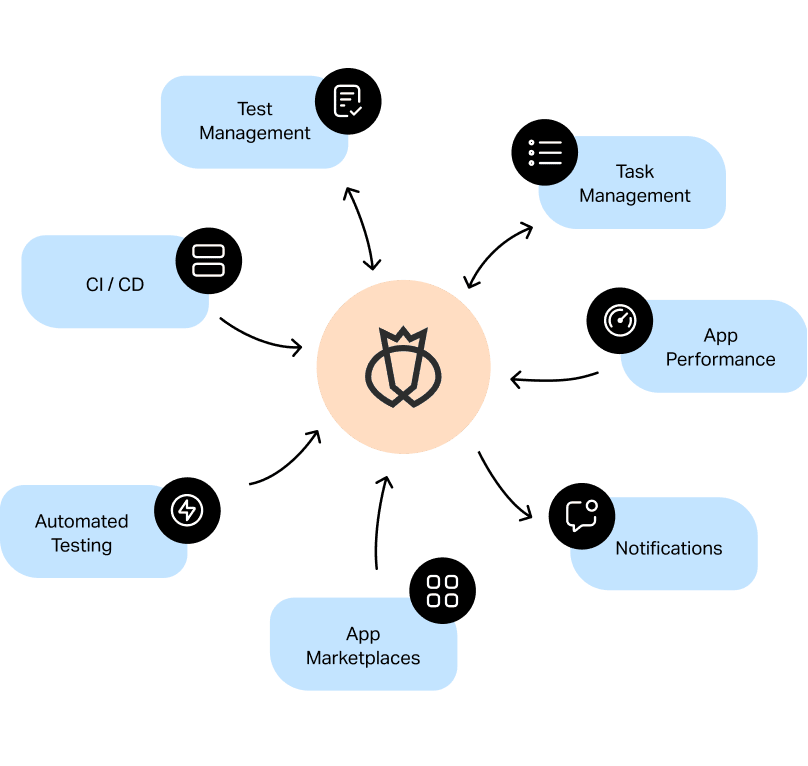Efficient Automation Testing: Enhancing Software Program Reliability and Speed
Efficient Automation Testing: Enhancing Software Program Reliability and Speed
Blog Article
From Guidebook to Automated Screening: A Comprehensive Overview to Transitioning Efficiently and Properly
In the realm of software application screening, the shift from guidebook to automated processes has become an increasingly crucial transition for companies seeking to improve efficiency and precision in their screening methods. The trip from guidebook to automated testing is not without its obstacles, but when come close to strategically and with a clear plan in mind, the benefits can be significant.
Benefits of Automated Examining
Automated testing offers various advantages, improving effectiveness and precision in software program advancement processes. Automated tests can be run concurrently on numerous tools and running systems, significantly speeding up the testing phase compared to hands-on screening.
Moreover, automated testing ensures a higher degree of precision in spotting problems. Because automated tests comply with predefined scripts, human error is reduced, resulting in more dependable test outcomes. Uniformity in screening is likewise enhanced, as automated tests execute the same actions specifically each time they are run. This uniformity is vital in making sure that all performances of the software application are completely checked, minimizing the chance of unseen insects slipping through to production.
Picking the Right Devices

Firstly, evaluate your objectives and needs. Recognize the range of your job, the innovations involved, and the skill set of your group. This evaluation will help you identify the features and capabilities you need in your testing tools.
Second of all, take into consideration the compatibility of the devices with your existing procedures and systems. Seamless integration with your current software application development lifecycle is vital to guarantee a smooth shift to automation.
In addition, examine the scalability and versatility of the devices. As your screening needs advance, the tools need to have the ability to adapt and suit modifications effectively.
Last but not least, aspect in the support and area around the tools. When applying automated testing, durable assistance and an active customer neighborhood can offer beneficial resources and aid. By very carefully taking into consideration these aspects, you can choose the right devices that line up with your needs and set the stage for an effective transition to automated testing.
Writing Effective Examination Manuscripts

When crafting test manuscripts, it is crucial to think about the particular needs of the software application being examined and make sure that the manuscripts deal with all critical capabilities. Clear and descriptive naming conventions for test manuscripts and test situations can boost readability and maintainability. Furthermore, including error handling devices within the test scripts can aid in determining and resolving issues without delay.
Furthermore, arranging examination scripts into modular parts can improve reusability and scalability, lowering redundancy and enhancing performance in test script upkeep. Normal reviews and updates to evaluate manuscripts are essential to maintain rate with evolving software application needs and functionalities. By complying with these concepts, testers can develop robust and efficient test scripts that add dramatically to the success of automated screening processes.
Integrating Automation Into Workflows
By perfectly incorporating automated testing devices like Selenium or Appium into the software program advancement lifecycle, groups can accomplish automation testing faster responses on code adjustments, leading to quicker insect detection and resolution. This combination blog here allows for constant testing throughout the advancement procedure, guaranteeing that any kind of problems are recognized early on, resulting in higher software application quality. Appropriate assimilation of automation tools calls for collaboration between growth, testing, and operations groups to establish a unified process that maximizes efficiency and efficiency in supplying top quality software program items.
Guaranteeing a Smooth Shift
Efficiently transitioning to automated testing includes careful preparation and careful execution to lessen disturbances and make best use of efficiency in the software application growth process - automation testing. To guarantee a smooth shift, it is essential to start by carrying out a detailed assessment of the current testing processes and determining locations where automation can bring one of the most substantial advantages. Involving with all stakeholders early on while doing so, including designers, testers, and job supervisors, is critical for gathering support and buy-in for the automation effort
Interaction is vital throughout this change phase. Clear communication of the goals, benefits, and assumptions of automated screening aids to handle any kind of resistance or problems that might emerge. In addition, giving ample training and resources for employee to upskill in automation tools and methods is important for guaranteeing a successful transition.

Final Thought
In verdict, transitioning from handbook to automated screening supplies numerous benefits, consisting of raised performance and reliability. By selecting the suitable tools, composing efficient examination manuscripts, and integrating automation perfectly into workflows, organizations can make sure a effective and smooth shift. It is important to welcome automation as a beneficial property in software program screening procedures to enhance general high quality and efficiency.
In the realm of software application testing, the shift from guidebook to automated procedures has actually ended up being a progressively important transition for organizations looking for to boost effectiveness and accuracy in their why not try here testing practices. Automated examinations can be run simultaneously on numerous gadgets and operating systems, considerably speeding up the testing phase contrasted to hand-operated testing. Consistency in testing is also boosted, as automated examinations carry out the exact same steps specifically each time they are run.To make sure the successful implementation of picked screening tools, the creation of reliable examination scripts plays a crucial duty in verifying the functionality and performance of automated procedures - automation testing. By complying with these principles, testers can produce reliable and robust examination scripts that add considerably to the success of automated testing procedures
Report this page